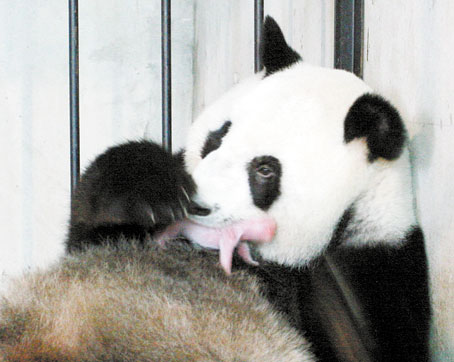A giant panda cub was born through artificial fertilization Friday at a research center in northwest China's Shaanxi Province, sources with the center confirmed Saturday.

Nine-year-old panda Zhuzhu, whose name translates into "pearl" in Chinese, gave birth to a female cub at 7:12 a.m. Friday, said Jin Xuelin, deputy director of the Shaanxi Rare Wild Animals Rescue and Breeding Research Center in Zhouzhi County in the suburbs of the provincial capital Xi'an.
The cub, weighing 206 grams at birth, was in good health, he said.
Zhuzhu gave birth to a male cub in July 2008. She was artificially inseminated again in April.
The birth of the new cub has increased the center's panda population to 21.
Three weeks ago, a panda gave birth to male-female twins at the center. Their mother, six-year-old Lousheng, was the first giant panda born through artificial fertilization at the center.
"The recent baby boom indicates we have made some progress in pandas' semen collection and freezing as well as prenatal care," said Jin.
About 1,590 pandas live in the wild in China, mostly in Sichuan, and the northwest provinces of Shaanxi and Gansu. Another 180 are bred in captivity.
(Xinhua News Agency September 5, 2009)